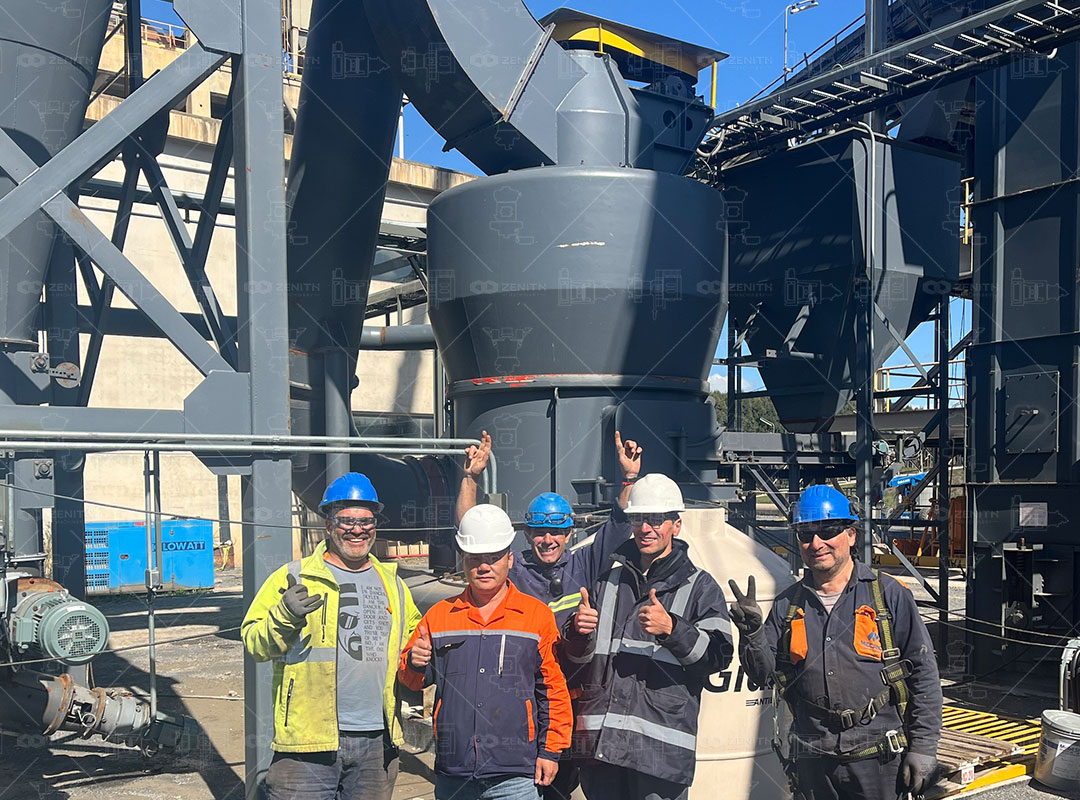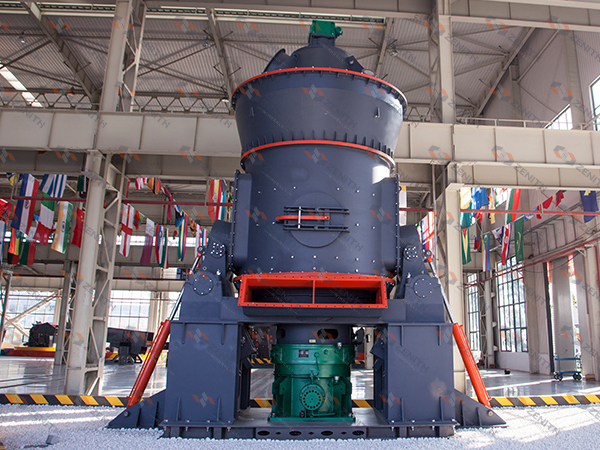Barite grinding equipment with a finished product specification of 625 mesh is used for the production of coatings.
2025-11-26 06:54:28
In the competitive world of industrial coatings, the quality of raw materials defines the final product. Barite, or barium sulfate, serves as a critical filler and extender in coatings formulations, providing weight, chemical inertness, and improved surface finish. However, its effectiveness is entirely dependent on achieving a consistent and exceptionally fine particle size. For high-end coatings requiring a smooth finish and excellent dispersion, a specification of 625 mesh (approximately 20 microns) is often the target. This level of fineness demands grinding technology that is not only precise but also efficient and reliable.
_1764111268607.jpg)
Shanghai Zenith Machinery, with its decades of specialization in industrial powder processing, has developed grinding solutions that master this challenge. Our research indicates that moving from a standard 400-mesh barite to a 625-mesh product can significantly enhance the opacity, gloss, and durability of a coating. The key is to achieve this without introducing excessive heat that can degrade the material or incurring prohibitive energy costs. This is where the selection of the correct grinding mill becomes paramount.
The Zenith Solution: Precision Grinding for Premium Results
While several mills in our portfolio can handle fine grinding, two stand out for the specific task of producing 625-mesh barite for coatings: the LUM Ultrafine Vertical Grinding Mill and the XZM Ultrafine Grinding Mill. These systems are engineered to operate in the ultrafine and micro-powder range, making them ideal for this application.
The LUM Ultrafine Vertical Grinding Mill represents our flagship technology for ultrafine processing. Integrating advanced grinding roller technology from Taiwan and German powder separation expertise, the LUM mill is designed for medium and high-end applications like premium coatings. Its standout feature for barite processing is the exceptional control over product purity. The sealed, negative-pressure operation ensures no iron contamination from wear parts, which is critical for maintaining the brightness and whiteness of the barite. Furthermore, its energy-saving design reduces consumption by 30-50% compared to conventional ultrafine mills, a significant operational advantage.
_1764111268609.jpg)
Alternatively, the XZM Ultrafine Grinding Mill offers remarkable flexibility. Its fineness can be arbitrarily adjusted between 325 and 2500 mesh, making the 625-mesh target easily achievable with simple adjustments on the electric control panel. The XZM mill's internal structure is relatively simple, leading to less downtime and easier maintenance. For coatings producers who may need to switch between different product specifications, the XZM's versatility and high efficiency—reportedly 40% higher than airflow mills—make it an exceptionally cost-effective choice.
Beyond the Machine: The Zenith Advantage
Choosing a grinding system is about more than just the machine's specifications; it's about the total package of performance, support, and reliability. Zenith mills are backed by international certifications including ISO, CE, and CU-TR, guaranteeing a baseline of quality and safety. Our global network, covering over 180 countries, ensures that technical support and spare parts are never far away.
A critical consideration for coatings plants is footprint and integration. Both the LUM and XZM mills feature compact, integrated designs that require less occupied area and lower comprehensive investment compared to traditional ball mill systems. This allows for easier installation in existing production lines and reduces the initial capital outlay.

Finally, environmental compliance is non-negotiable. All Zenith grinding systems, including the LUM and XZM, operate under negative pressure and are equipped with pulse dust collectors. This design contains the fine barite powder entirely within the system, resulting in a clean, dust-free workshop that meets stringent international environmental standards. The low noise and vibration levels further contribute to a better working environment.
Conclusion
The production of 625-mesh barite for high-quality coatings is a technically demanding process that requires specialized equipment. Zenith's LUM Ultrafine Vertical Grinding Mill and XZM Ultrafine Grinding Mill provide targeted solutions that combine precise particle size control, high energy efficiency, operational reliability, and environmental responsibility. By investing in the right technology, coatings manufacturers can significantly enhance their product quality and gain a competitive edge in the market.

Frequently Asked Questions (FAQs)
- What is the typical energy consumption for grinding barite to 625 mesh with your equipment?
Our LUM and XZM mills are designed for high efficiency. The LUM mill reduces energy consumption by 30-50% compared to ordinary mills, while the XZM mill consumes 70% less energy than air-flow mills for the same output. - Can your mills handle other mineral powders for coatings besides barite?
Yes, absolutely. Our ultrafine mills are also perfectly suited for grinding calcite, kaolin, talc, and wollastonite to similar fineness for various coatings applications. - How do you ensure the final barite powder is not contaminated by iron?
Our LUM and XZM mills are designed with this in mind. They operate under negative pressure with sealed chambers. Furthermore, critical grinding parts are made from high-quality, wear-resistant materials to minimize metallic contamination and preserve material whiteness. - Is the output fineness adjustable if we need to produce a different grade of powder in the future?
Yes, both the LUM and XZM mills feature highly adjustable fineness controls. The XZM mill, in particular, allows for arbitrary adjustment between 325 and 2500 mesh via a simple control panel setting. - What kind of after-sales support and service do you provide globally?
We have a marketing network covering over 180 countries and overseas offices in more than 30 countries. This allows us to provide prompt technical support, maintenance services, and spare parts supply wherever your operation is located. - How does the footprint of your ultrafine mills compare to a traditional ball mill system?
Our vertical and ultrafine grinding mills have a significantly smaller footprint. For example, the LM series vertical mill covers about 50% of the area of a comparable ball mill system, saving valuable factory space.









